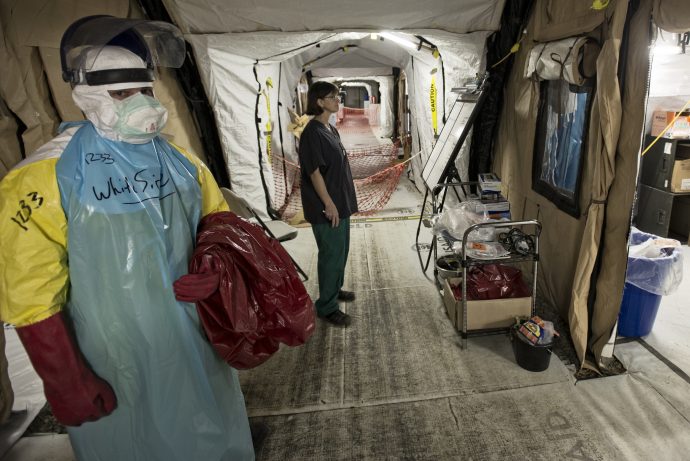You are here
Resilient Health Systems Can Prevent and Contain Pandemics
Wed, 2016-05-25 08:04 — davidmcResilience is one of those buzzwords that every so often captures the hearts and minds of development practitioners. The importance of this particular term, though, becomes all too clear as the world faces an increasing number of humanitarian crises, including outbreaks that can turn into pandemics.

Did you know, for instance, that every year, up to 500,000 people die from the flu? And in years when pandemic flu occurs, millions of people can lose their lives. The 1918 pandemic flu is a good case in point, as it infected up to 40 percent of the populations of some countries and killed up to 100 million people.
pic by
Capt. John Whiteside of the U.S. Public Health Service dons Personal Protective Equipment
as he prepares for a new potential Ebola case at the Monrovia Medical Unit in Liberia.
USAID led and coordinated the U.S. Government’s relief efforts in West Africa for the Ebola response. / Neil Brandvold, USAID
As a result of global warming, more pathogens with pandemic potential continue to emerge, many of which originate in animals (zoonotic). They include Ebola, H5N1 avian flu, H7N9 avian flu, HIV/AIDS, and two kinds of coronavirus: severe acute respiratory syndrome (SARS) and Middle East Respiratory Syndrome (MERS).
In this scenario, resilience is about detecting potential pandemic threats, and then mitigating and containing them. This concept came to the forefront during the 2014 Ebola outbreak when already stretched and under-resourced health systems in West Africa were confronted with a surge of patients, a contagious virus, overall lack of preparedness and minimal resources.
publish - Irene Koek on Tuesday, May 24th 2016
see more at: https://blog.usaid.gov/2016/05/resilient-health-systems-can-prevent-and-contain-pandemics/

Recent Comments